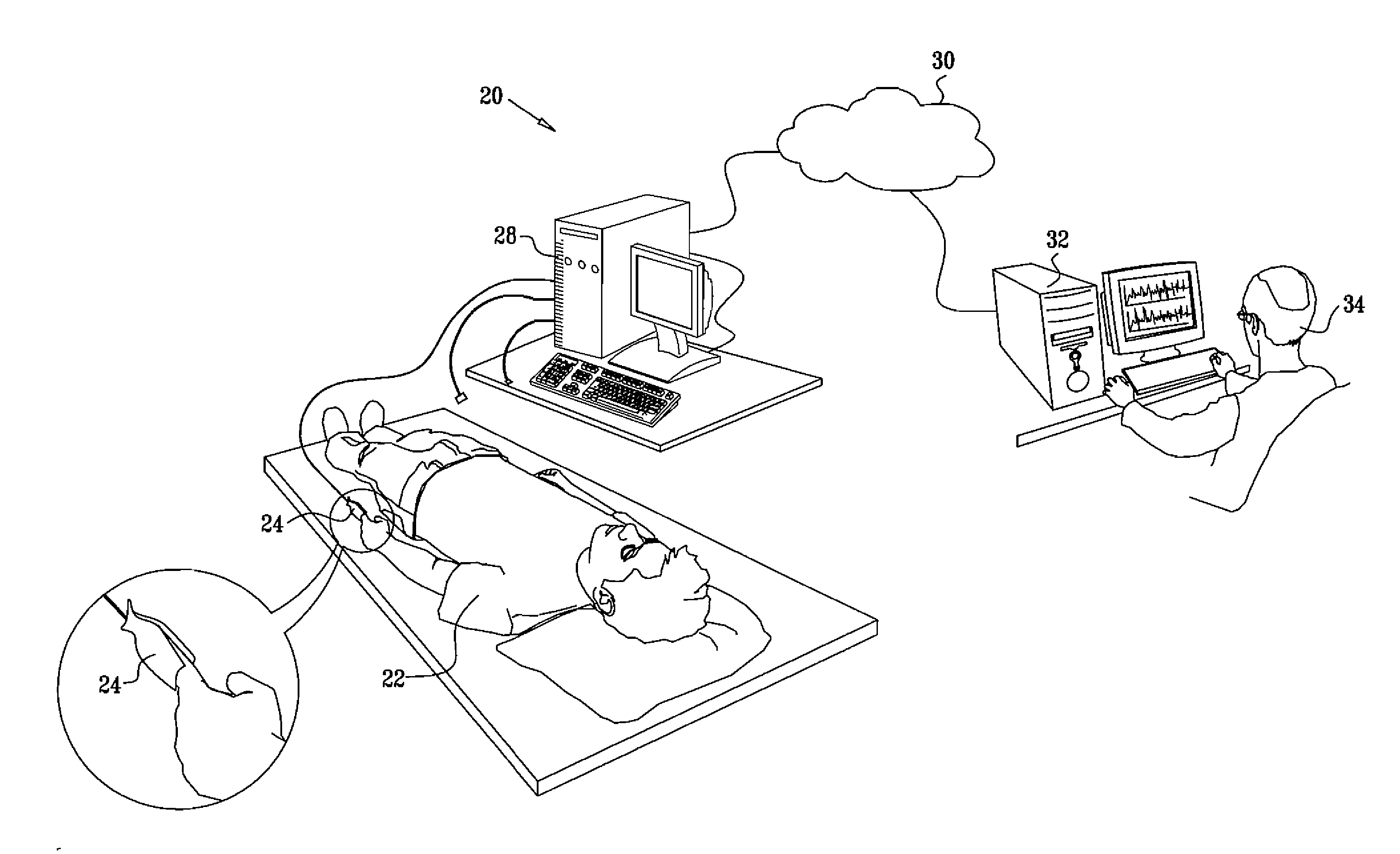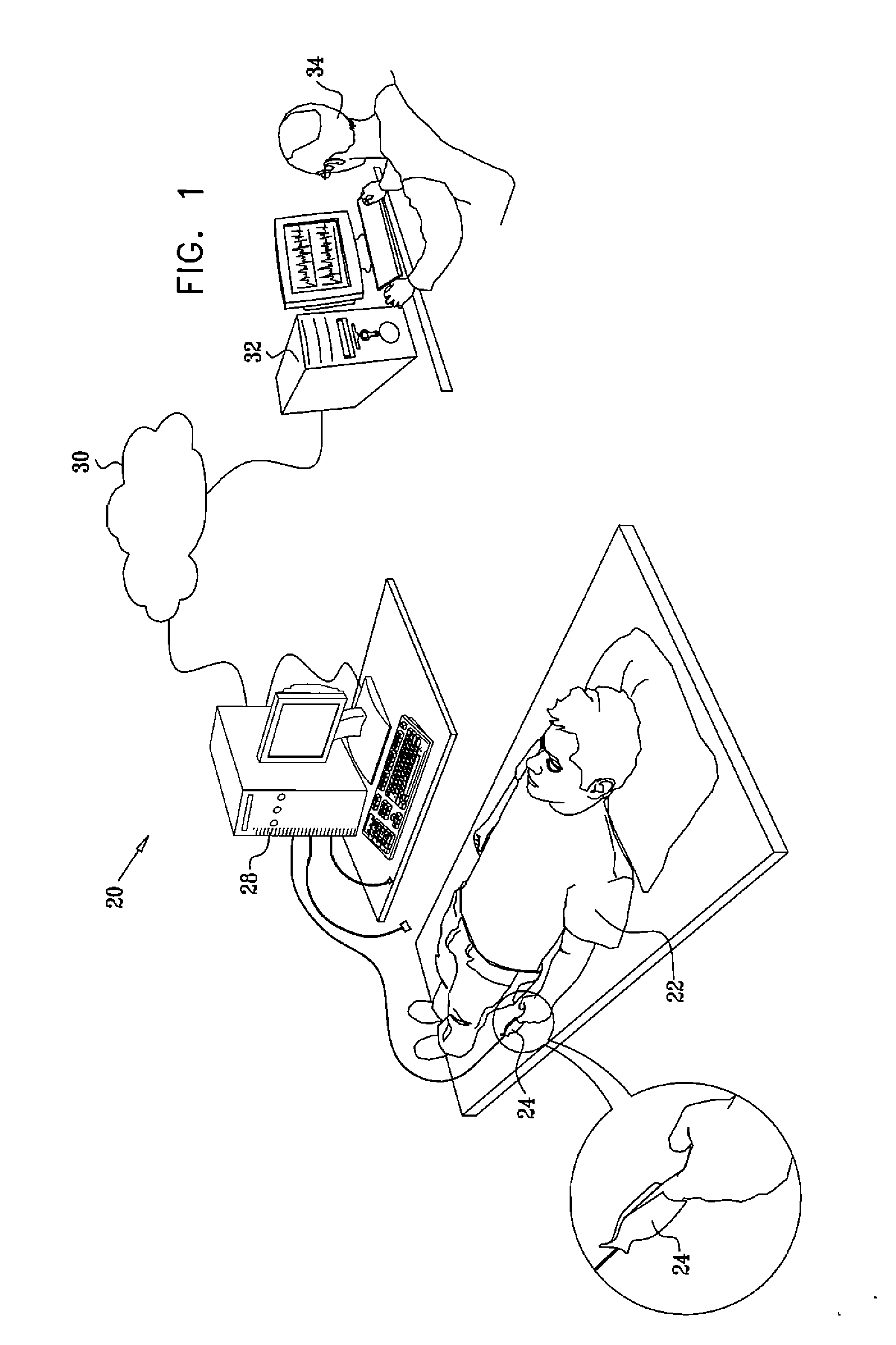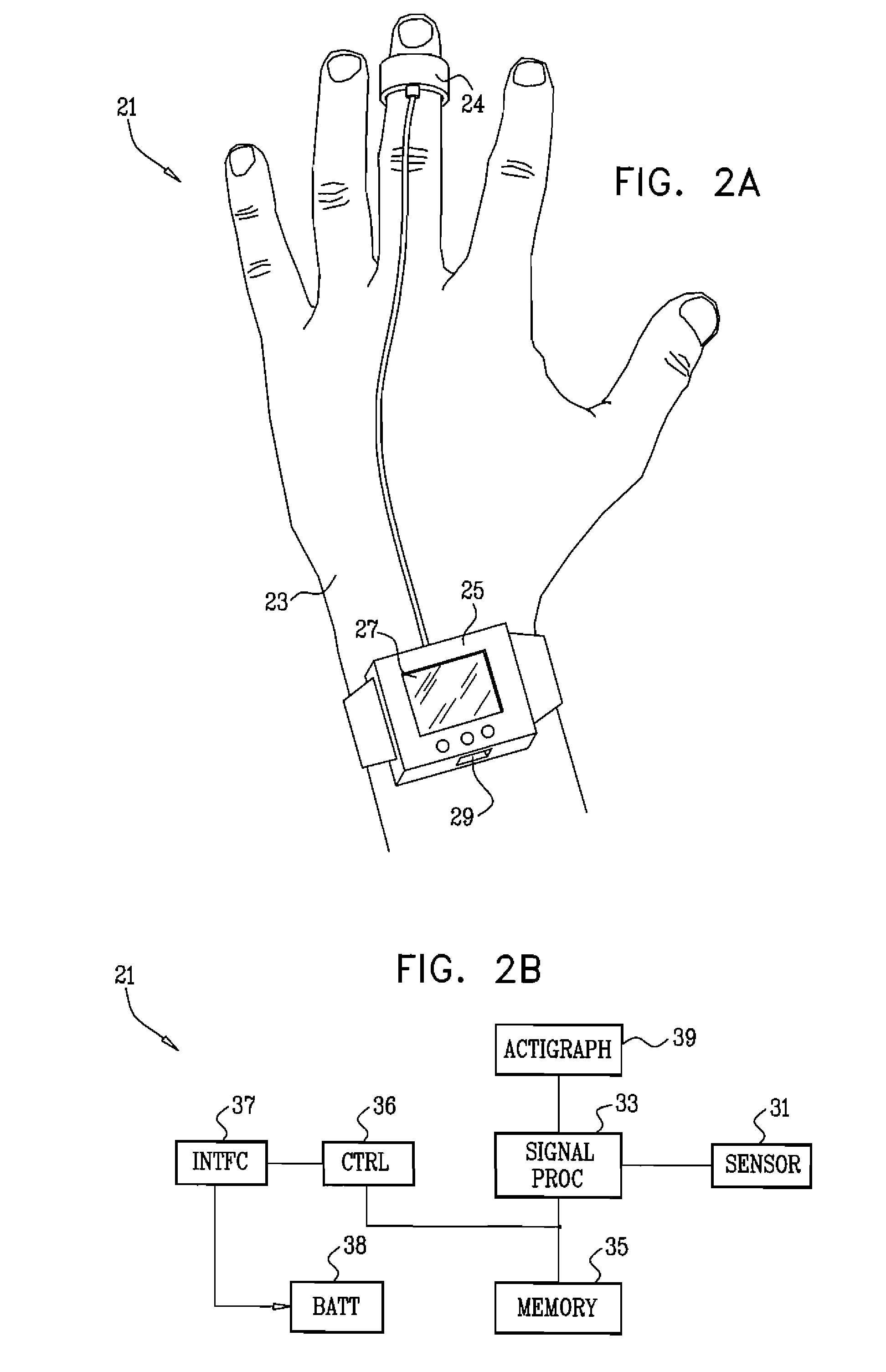Respiration-based prognosis of heart disease
a heart failure and rectal prognosis technology, applied in the field of physiological monitoring and diagnosis, can solve the problems of worsening the prognosis of heart failure patients
- Summary
- Abstract
- Description
- Claims
- Application Information
AI Technical Summary
Benefits of technology
Problems solved by technology
Method used
Image
Examples
Embodiment Construction
[0048]FIG. 1 is a schematic, pictorial illustration of a system 20 for sleep monitoring and diagnosis, in accordance with an embodiment of the present invention. In this embodiment, system 20 is used to monitor a patient 22 in a home, clinic or hospital ward environment, although the principles of the present invention may similarly be applied in dedicated sleep laboratories. System 20 receives and analyzes a photoplethysmograph signal from a suitable sensor, such as a pulse oximetry device 24. Device 24 provides a photoplethysmograph signal indicative of blood flow and a signal indicative of the level of oxygen saturation in the patient's blood. In the context of the present patent application and in the claims, the photoplethysmograph signal is thus considered to be a signal that is associated with blood oxygen saturation. Since the photoplethysmograph signal is modulated by both the heart rate and respiratory rate, it may also be used to provide a heart rate and respiratory rate ...
PUM
 Login to View More
Login to View More Abstract
Description
Claims
Application Information
 Login to View More
Login to View More - R&D
- Intellectual Property
- Life Sciences
- Materials
- Tech Scout
- Unparalleled Data Quality
- Higher Quality Content
- 60% Fewer Hallucinations
Browse by: Latest US Patents, China's latest patents, Technical Efficacy Thesaurus, Application Domain, Technology Topic, Popular Technical Reports.
© 2025 PatSnap. All rights reserved.Legal|Privacy policy|Modern Slavery Act Transparency Statement|Sitemap|About US| Contact US: help@patsnap.com



